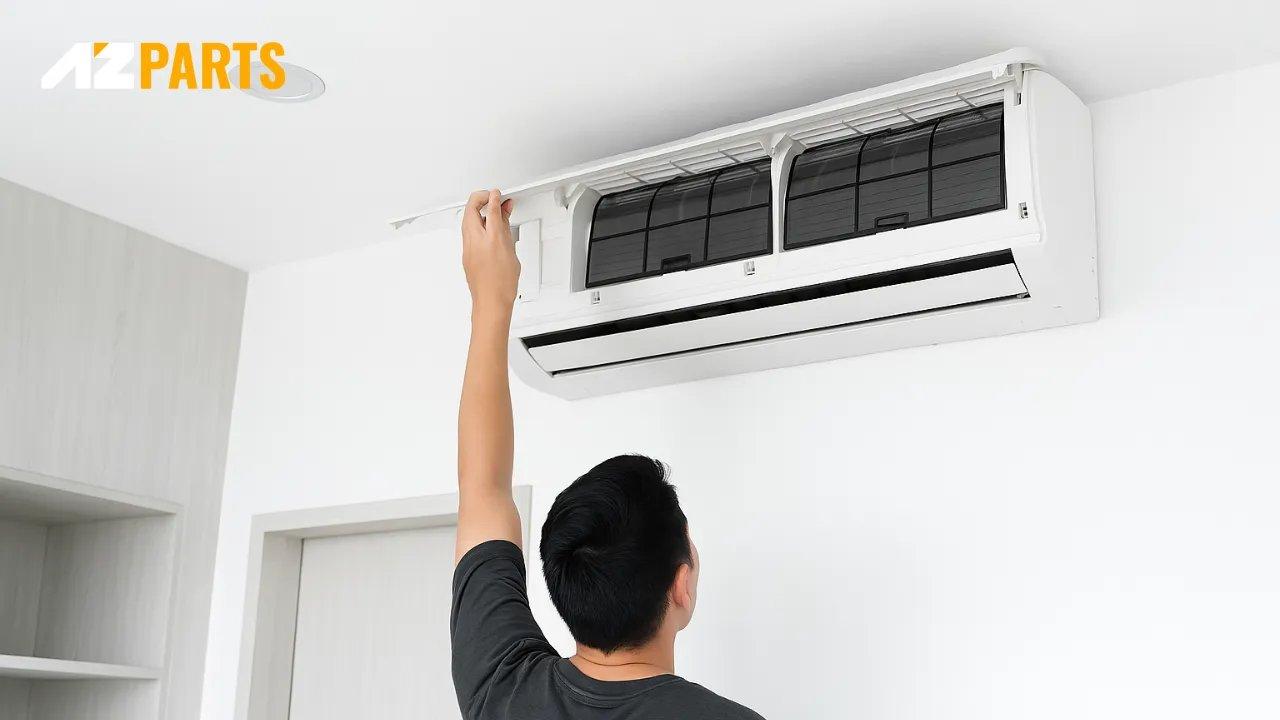Review
Air Conditioner Parts & Functions Explained for Homeowners
AZparts Team
Updated on July 14, 2025
7 min read
When your home isn’t staying cool, understanding air conditioner parts and functions is key to diagnosing the issue. In this guide, AZParts explains the major components of your AC unit and how they work together as a system. You’ll also learn to recognize common signs of faulty parts, so you can act quickly before small problems turn into costly repairs.

1. What are The 4 Main Parts of the Air Conditioner Unit?
If your AC isn’t cooling properly, the issue could begin with one of its key components. Here are the four main air conditioner parts and what they do:
1.1. Evaporator
The evaporator is the part of your air conditioner that cools the air inside your home. It’s usually found inside the indoor unit or attached to the furnace. This component has coils filled with a cold liquid called refrigerant.
When warm air from your home blows over these coils, the refrigerant absorbs the heat and turns into a gas. This is how your AC removes heat from the air, making your home cooler. The evaporator works together with the other essential air conditioner parts to complete the cooling process and ensure efficient performance.
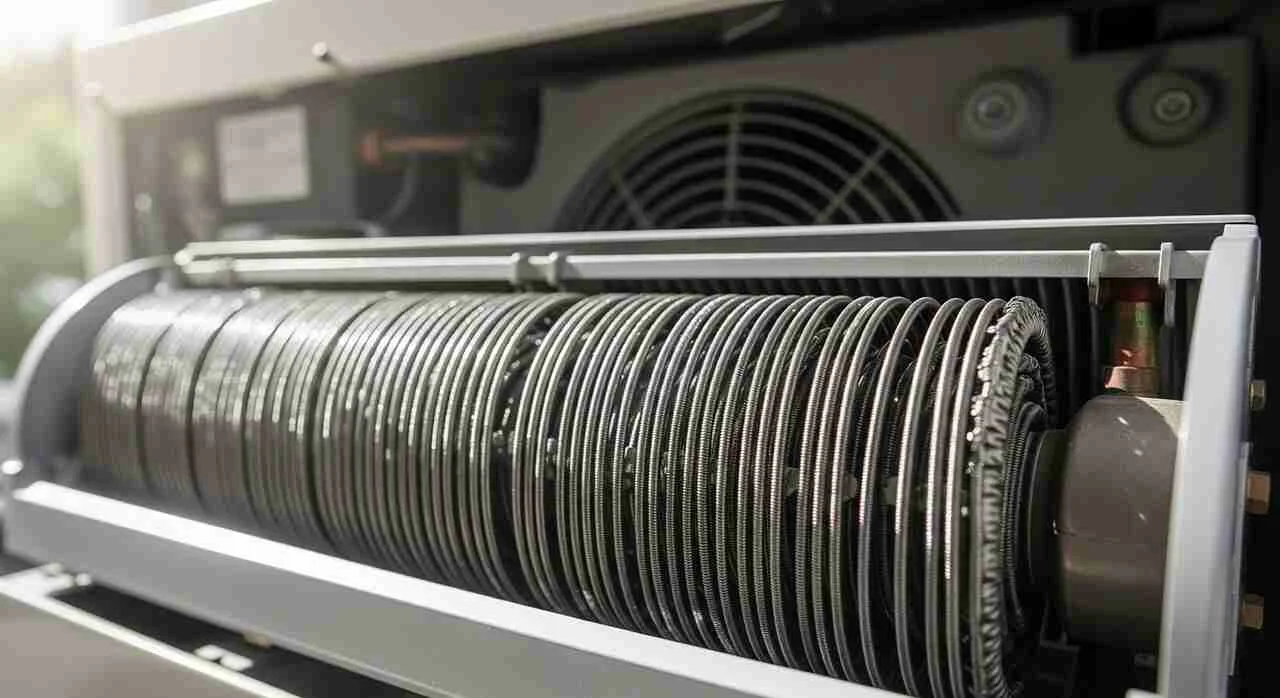
Evaporator is usually found inside the indoor unit or attached to the furnace (Source: AZParts)
1.2. Condenser
The condenser is the outdoor part of your air conditioner that helps release heat collected from inside your home. It works closely with other key parts like the compressor, fan, and condenser coil, all of which are housed in the condenser unit.
When the hot refrigerant gas leaves the indoor evaporator, the condenser cools it down and turns it into a liquid again. The fan helps blow outdoor air over the coils to speed up this heat release. This step is essential for keeping your AC system running smoothly and preparing the refrigerant to cycle back inside and absorb more heat.
1.3. Expansion valve
The expansion valve is a small but crucial part of your air conditioning system. Its main job is to control how much refrigerant flows into the evaporator. It helps change the refrigerant from a high-pressure liquid into a low-pressure gas.
This process allows the refrigerant to absorb heat effectively inside the evaporator. By carefully managing the pressure drop, the expansion valve helps the entire cooling cycle work smoothly and keeps your home at a comfortable temperature.
1.4. Compressor
The compressor is the most essential part of your air conditioner, often called the heart of your air conditioner. Located in the outdoor unit, it compresses warm refrigerant vapor into a high-pressure liquid to help cool your home. It also consumes the most energy during operation.
To support smooth startup and performance, the AC capacitor provides the electrical boost the compressor needs. A weak or failing AC capacitor can prevent the compressor from starting properly. To maintain reliable performance, consider using quality capacitors like those available at AZParts, which are built to support long-term function and safe operation.
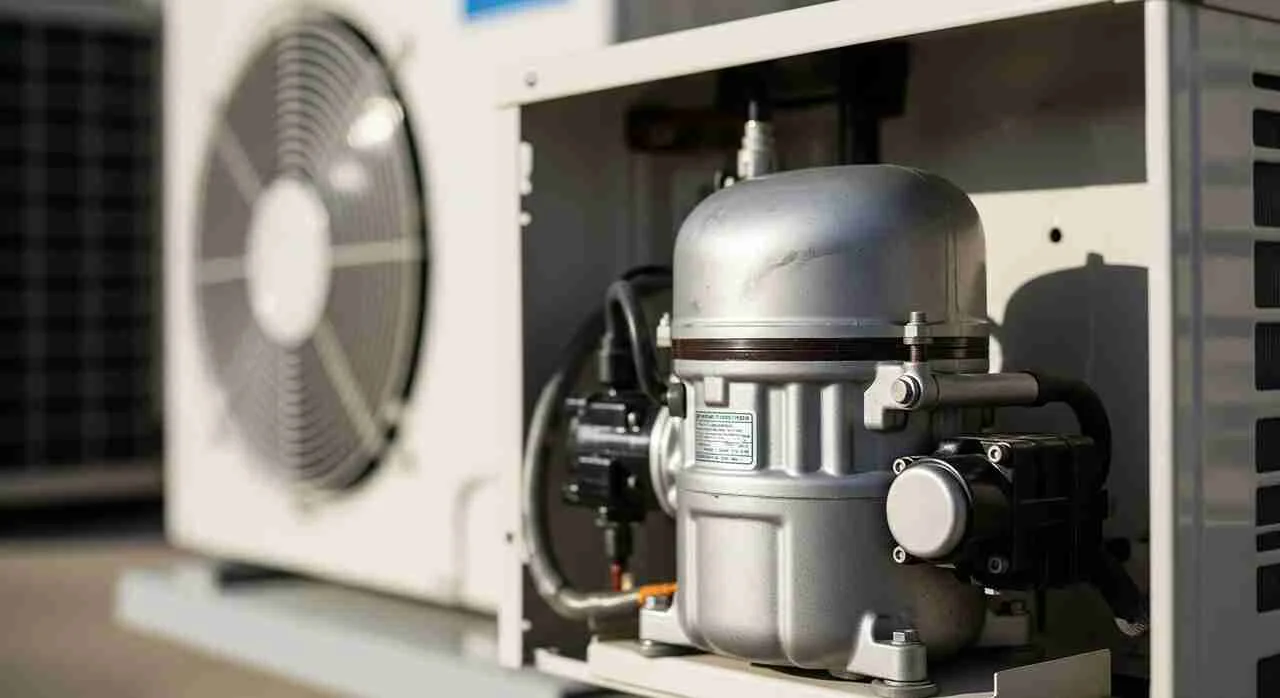
Compressor is often called the heart of your air conditioner (Source: AZParts)
2. Additional Parts of a Central Air Conditioning System
If your air conditioner still isn’t performing as expected after checking the main components, the problem might be with one of its supporting parts. Here are four key components that help your system run smoothly:
2.1. Air filter
The air filter is a key component of your AC system that traps dust, pollen, and other airborne particles before they circulate through your home. It helps maintain indoor air quality and prevents debris from clogging internal parts, especially the evaporator coil.
While the filter protects internal air quality, the AC cover protects the outdoor unit from dirt, moisture, and harsh weather that can make its way inside and overload the filter. You can find durable, well-fitted AC covers at AZParts to help prolong the life and efficiency of your air conditioning system.
2.2. Refrigerant
Refrigerant is the chemical compound that flows through the air conditioning system, absorbing and releasing heat to create a cooling effect. It moves between the evaporator and condenser coils, shifting from a low-pressure gas to a high-pressure liquid and back again.
This constant cycle of compression and expansion allows the system to remove heat from your indoor air. Without refrigerant, your AC simply wouldn’t be able to cool your home effectively.
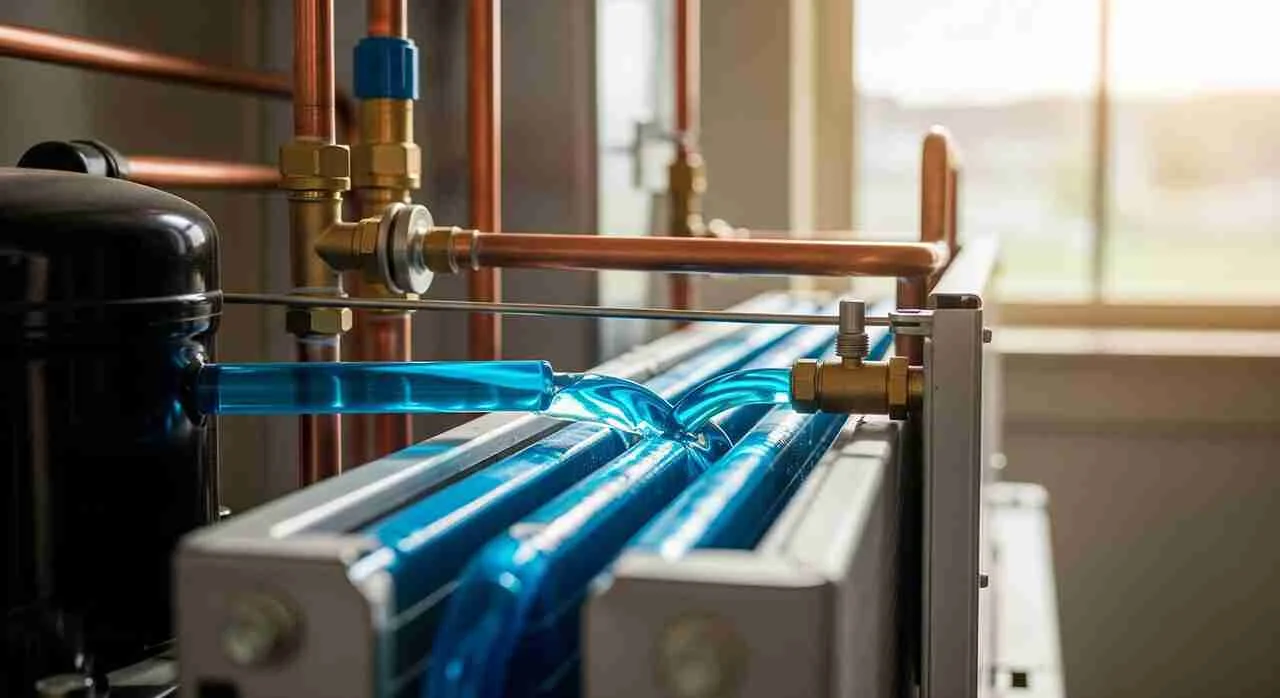
Refrigerant moves between the evaporator and condenser coils (Source: AZParts)
2.3. Fan
The fan in your AC plays a critical role in circulating air throughout the system. The indoor fan blows warm air across the evaporator coil to cool it, while the outdoor fan helps release heat by moving air over the condenser coil.
Both fans work together to maintain efficient airflow and ensure consistent cooling performance. If either fan fails, your system may overheat or provide uneven cooling.
2.4. Thermostat
The thermostat is your AC’s command center, allowing you to set and regulate the desired indoor temperature. It continuously monitors room conditions and signals the system to turn on or off based on your settings.
Modern thermostats, especially smart ones, improve comfort and energy savings by learning your habits or offering remote access. A faulty thermostat can lead to inconsistent temperatures and inefficient system operation.
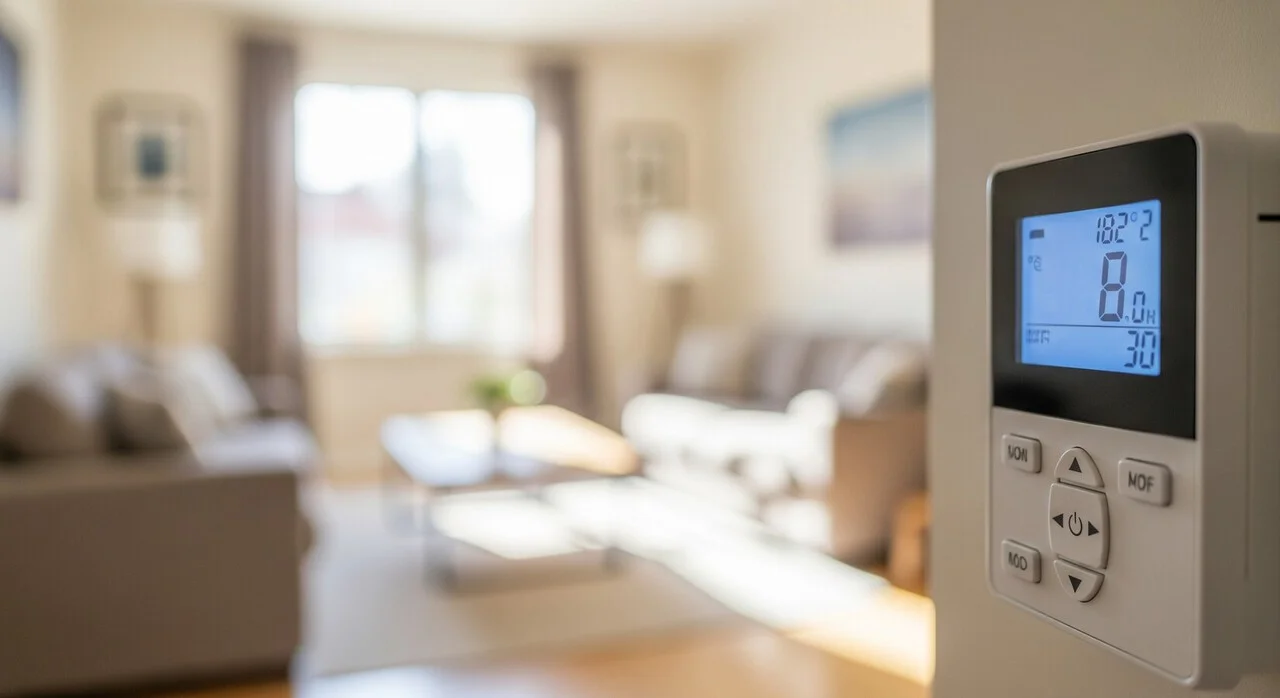
The thermostat allows you to set and regulate the desired indoor temperature (Source: AZParts)
3. How do AC Components Function as a System
Once you know how each part works, it’s easier to see how they function together. Each AC component has a role in keeping your home cool and comfortable. Here's how they interact step by step:
- The process starts with the thermostat. When it senses the room is too warm, it signals the AC system to turn on.
- The indoor fan pulls warm air from your home through return ducts and passes it through the air filter, where dust and particles are removed.
- This filtered air moves over the evaporator coil, where the cold refrigerant inside absorbs the heat, transforming the air into a cooler stream.
- The blower fan then distributes the cooled air through ductwork back into your living spaces.
- Meanwhile, the refrigerant, now carrying the absorbed heat, flows outside to the compressor, which increases its pressure and temperature.
- The heated refrigerant enters the condenser coil, where the outdoor fan helps release the heat into the outdoor air, cooling the refrigerant back into liquid form.
- Finally, the liquid refrigerant moves through the expansion valve, which reduces its pressure before re-entering the evaporator coil, ready to absorb more heat.
- This cycle repeats continuously to keep your home cool and comfortable.
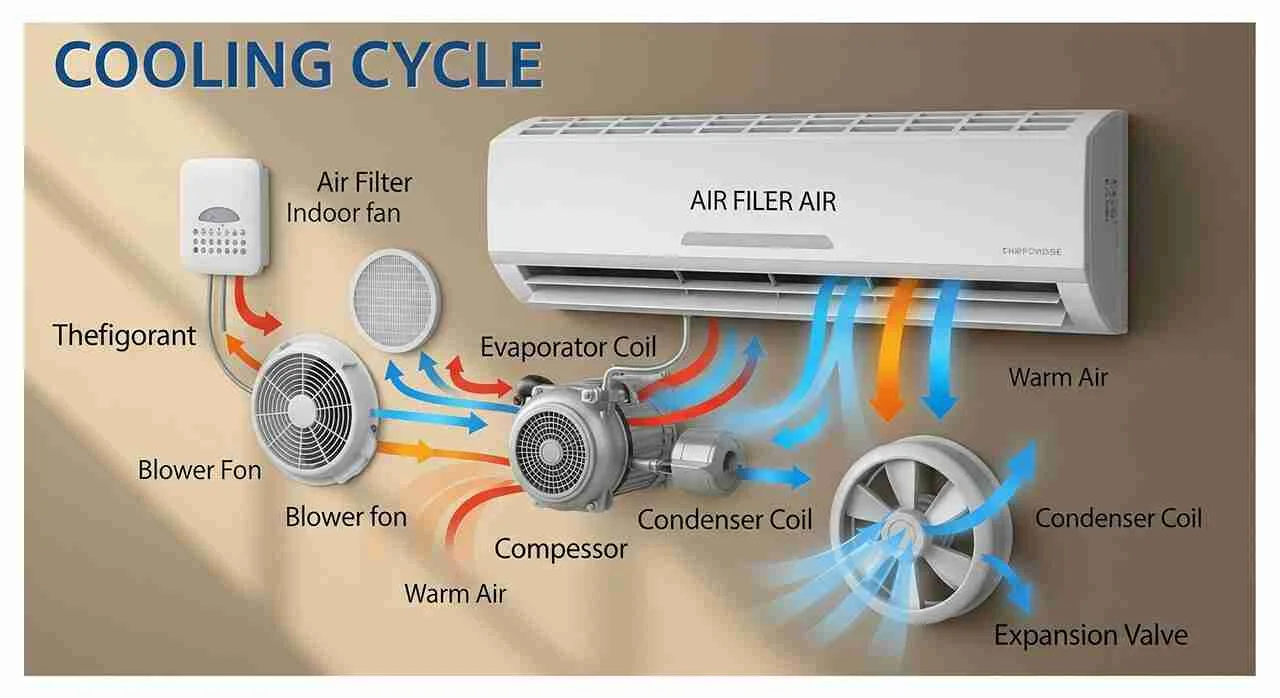
Each AC component has a role in the cooling cycle (Source: AZParts)
4. Common Signs of Faulty Air Conditioning Parts
If your air conditioner isn’t keeping up with the heat, certain components might be worn out or failing. Here are some common warning signs that it’s time to check your system:
4.1. No airflow
If the AC doesn’t turn on or there’s little to no air coming from the vents, start by checking the thermostat settings and circuit breakers. If everything seems fine but the system still won’t run, internal parts like the capacitor or compressor could be the issue. A professional inspection is recommended.
4.2. Unusual noises
Banging, hissing, buzzing, or clicking sounds often signal internal problems. These could mean loose hardware, a refrigerant leak, or electrical trouble. Some sounds, like screaming or persistent squealing, may indicate high-pressure issues and should be addressed immediately to avoid system damage.
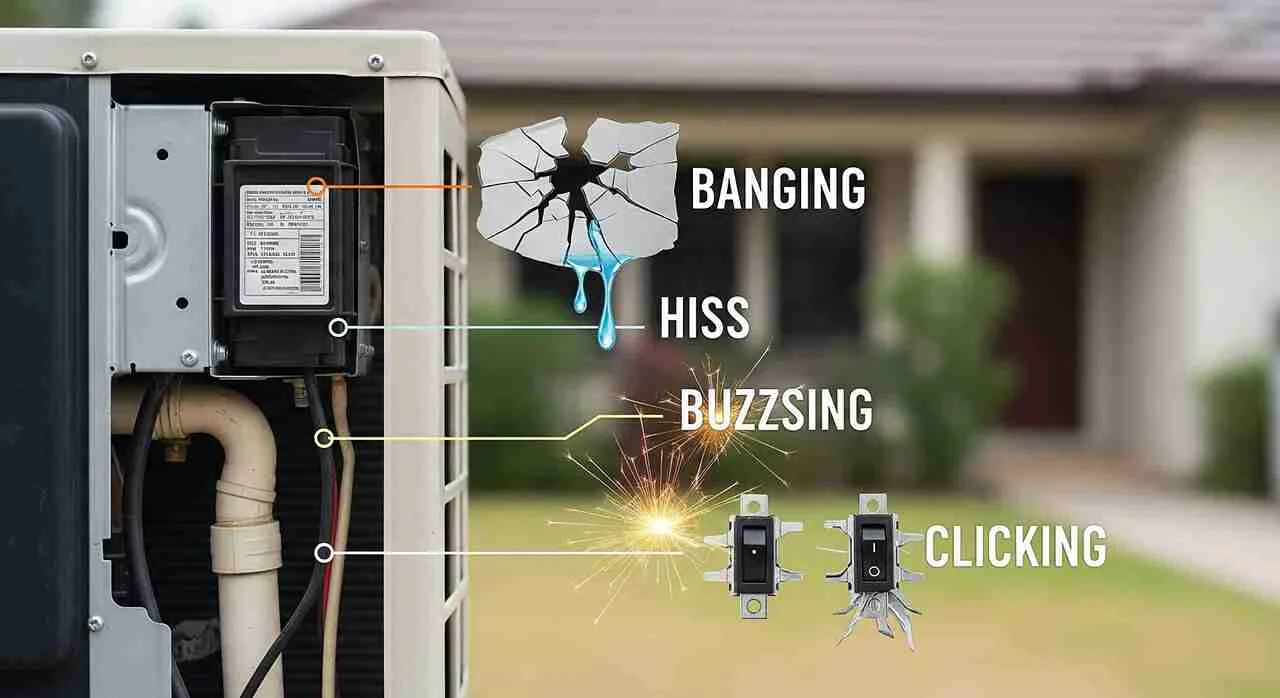
Unusual noises often signal internal problems (Source: AZParts)
4.3 Odd smells
Unpleasant odors, like moldy, burnt, or sewage-like smells, can suggest problems such as clogged filters, stagnant water, or even gas leaks. These smells aren’t just annoying; they can pose health and safety risks. Cleaning the system or replacing damaged parts may be necessary.
4.4 Rising energy bills
A sudden rise in your electricity bill, especially without increased AC usage, could mean your system is working harder than it should. This might be due to a clogged filter, refrigerant loss, or a failing compressor. Timely repairs can restore efficiency and prevent further cost increases.
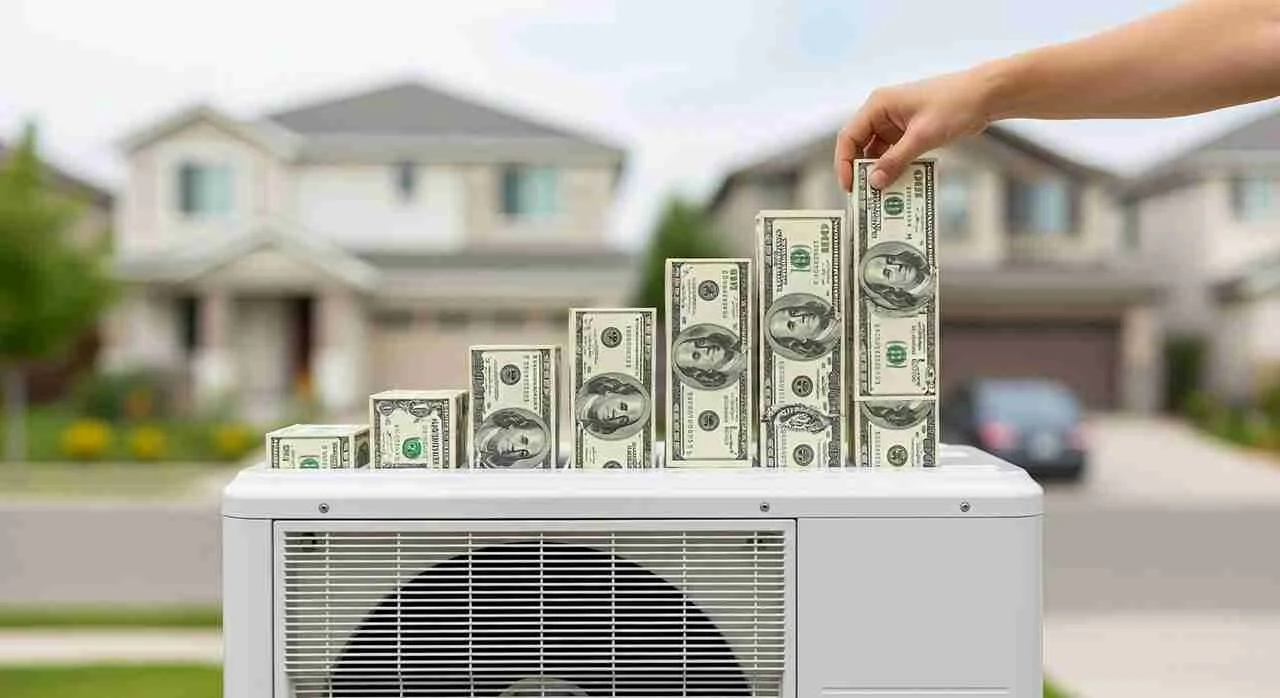
A sudden rise in your electricity bill could mean your system is faulty (Source: AZParts)
Understanding air conditioner parts and functions is the first step to maintaining a reliable and efficient cooling system. From the thermostat to the compressor, each component plays a vital role in keeping your home comfortable. Regular maintenance and timely part replacement can prevent costly breakdowns and extend the life of your AC.
Looking for high-quality components? AZParts offers dependable replacement parts to help your system run like new.
Contact Information:
- Address: 8 The Green, Ste A, Dover, Delaware 19901-3618, United States
- Email: support@azparts.com
Air conditioner
Further Reading
Further Reading





